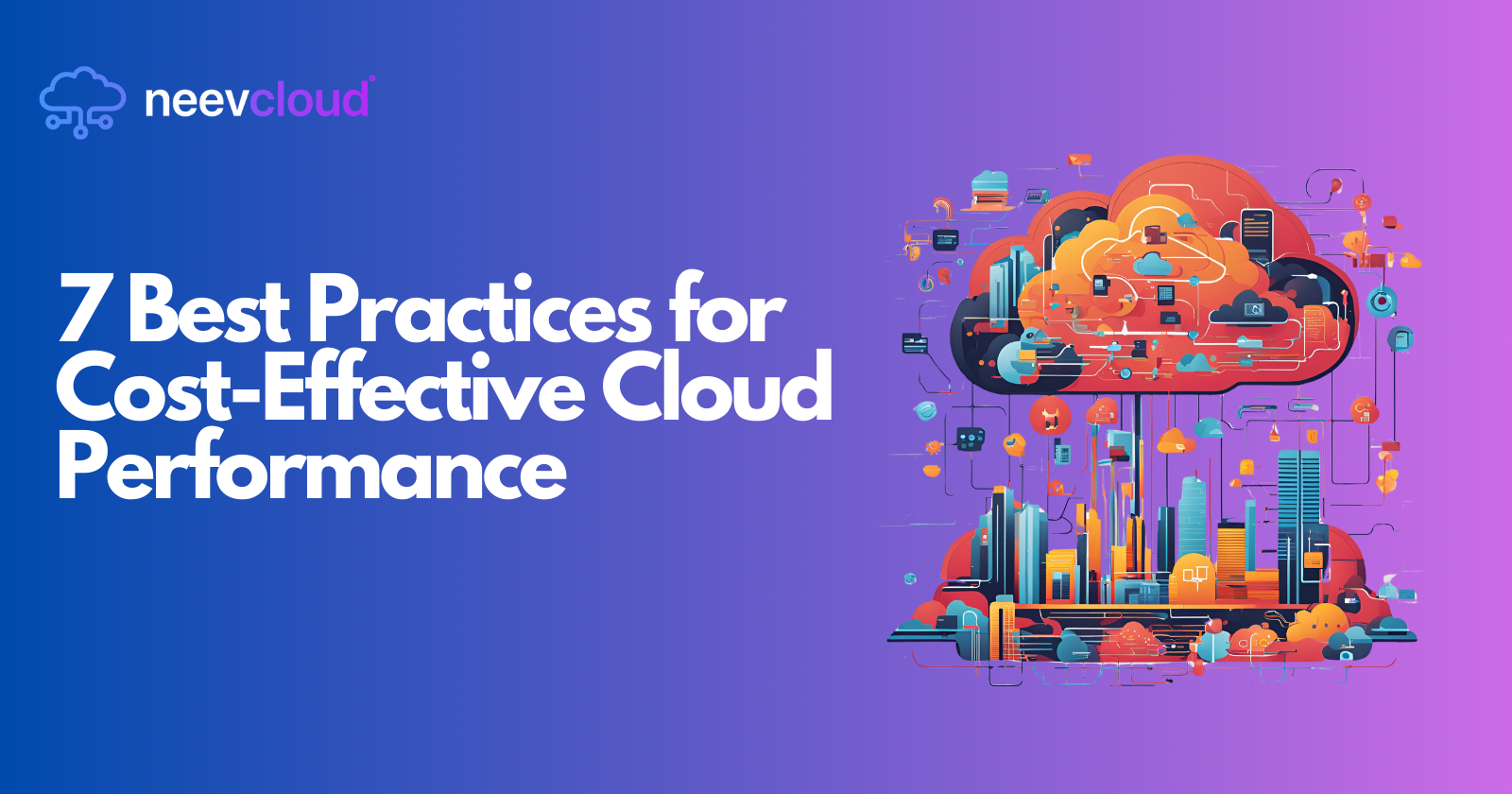7 Best Practices for Cost-Effective Cloud Performance
 Tanvi Ausare
Tanvi Ausare
As cloud technology grows and evolves, businesses are challenged to maximize both cost-effectiveness and performance to stay competitive. Whether you’re managing a vast AI datacenter, scaling operations on a Cloud GPU, or optimizing the infrastructure for AI Cloud workloads, a refined cloud strategy can unlock immense benefits. This article outlines seven best practices for improving cloud efficiency and performance without sacrificing your budget.
1. Optimize Workloads by Leveraging AI-Powered Cloud Management
Using AI-based solutions to optimize workloads can dramatically reduce unnecessary resource allocation, prevent idle times, and dynamically adapt to the performance requirements of each task.
Identify workload-specific requirements: Leverage workload monitoring to profile applications. For example, data-heavy processes and real-time analytics may have different compute and memory requirements.
Use AI-driven autoscaling: Implement AI-powered autoscaling in Cloud AI environments to automatically scale resources in real-time based on workload demands, eliminating over-provisioning.
Utilize predictive analysis: Predictive AI algorithms can help anticipate resource needs, balancing efficiency and cost. This is especially helpful in managing spikes in demand within an AI datacenter.
2. Implement Cost-Aware GPU Allocation Strategies
Optimizing the allocation and usage of GPUs, especially for high-compute tasks such as AI model training, can yield significant cost savings and performance benefits.
Match GPUs to workloads: For GPU-intensive processes, like AI model training and inference, allocate specific GPU types that align best with workload needs. The NVIDIA Cloud Computing platform, for instance, provides multiple GPU options suited for different use cases.
Utilize reserved instances for predictable workloads: For stable, long-term tasks, reserve instances to secure lower pricing on Cloud GPUs and avoid the expense of on-demand pricing.
Use spot instances for temporary tasks: For flexible and non-urgent tasks, use spot instances for considerable savings. This strategy is particularly effective for large-scale AI computations on the cloud.
3. Adopt a Hybrid Cloud Approach for Optimized Cost and Flexibility
Hybrid cloud strategies allow businesses to combine the scalability of public cloud resources with the control of private cloud infrastructure, balancing performance, cost, and security needs.
Distribute workloads intelligently: Place sensitive, latency-critical applications in a private cloud while allocating non-sensitive or peak-load applications to the public cloud.
Utilize cloud bursting for high-demand scenarios: For infrequent but intense computing requirements, use cloud bursting, where a private cloud offloads overflow tasks to a public cloud, optimizing cost while maintaining high performance.
Consider containerization for portability: Use containerized applications to enhance workload portability across environments. This is highly beneficial for managing distributed Cloud AI workloads seamlessly.
4. Adopt a Data-Centric Approach to Storage Optimization
Data is at the core of cloud-based AI and analytics, and optimizing storage can lead to both cost savings and improved performance.
Classify and tier storage: Store frequently accessed (hot) data in high-performance storage solutions, while less frequently accessed (cold) data can reside in cost-efficient storage options.
Use data compression and deduplication: Reduce storage costs by compressing data and eliminating duplicates. Many AI datacenter environments benefit from deduplication, especially with vast datasets.
Adopt data lifecycle management: Implement policies that manage the movement of data across storage tiers over time, moving data as it ages to more affordable storage, like archival solutions.
5. Enhance Network Optimization with Cloud-AI Integration
Optimizing cloud network resources can help reduce latency and enhance connectivity, which is particularly crucial in high-performance AI applications.
Invest in AI-optimized networking solutions: Leverage networking solutions designed for AI workloads, such as NVIDIA’s Mellanox smart NICs, which offload some processing tasks from CPUs and can streamline data movement.
Implement multi-region caching: By caching data closer to end-users in multiple regions, you can minimize latency and improve access times for globally dispersed users.
Utilize bandwidth management: Optimize bandwidth usage by routing traffic strategically, reducing latency for Cloud AI applications that rely on real-time data processing.
6. Leverage FinOps to Keep Cloud Spending in Check
Cloud FinOps, a financial management discipline specifically for cloud operations, is essential to monitor, measure, and optimize cloud spending.
Track real-time costs: Use cloud-native FinOps tools to track usage patterns and spending in real-time, providing transparency in cost management.
Optimize pricing models with FinOps insights: Identify where savings can be made, such as by switching from on-demand to reserved instances for AI datacenter usage.
Set up alerting and budget thresholds: Establish thresholds for budget limits and set alerts when usage approaches these limits to avoid surprises in billing.
7. Automate Everything with AI-Driven Orchestration and Management
Automation can significantly reduce costs and enhance operational efficiency by eliminating manual processes and reducing the risk of human error.
Automate provisioning and deprovisioning: Automated provisioning and deprovisioning of resources based on demand can prevent resource wastage, particularly useful in dynamic Cloud AI environments.
Utilize Infrastructure as Code (IaC): IaC tools, such as Terraform, enable scalable management and version control for infrastructure, ensuring consistency across environments while reducing manual overhead.
AI-powered orchestration for dynamic resource management: AI-driven orchestration solutions can dynamically allocate resources where they’re most needed, optimizing both cost and performance for complex, multi-tier applications.
In Summary
Implementing these best practices can help you create a cloud strategy that effectively balances cost efficiency and performance. Whether you're using a Cloud GPU for AI-intensive tasks, scaling an AI datacenter, or managing a hybrid Cloud AI infrastructure, these optimizations provide a framework to achieve the best of both worlds.
Subscribe to my newsletter
Read articles from Tanvi Ausare directly inside your inbox. Subscribe to the newsletter, and don't miss out.
Written by
